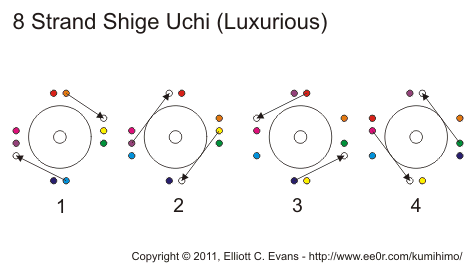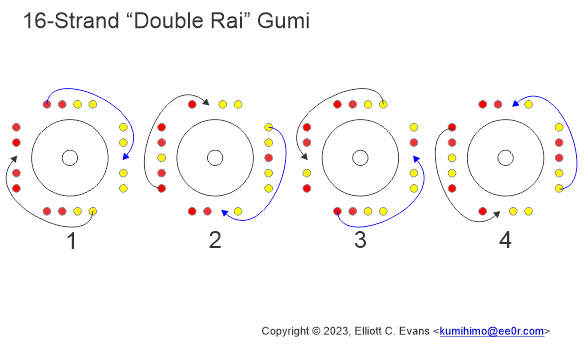Following up on the previous double-hira, which expanded the 8-strand flat braid to 16 strands by having 8 groups of 2 instead of 4 groups of 2, I decided to try the braid with 4 groups of 4. Here’s what the pattern looks like:

Note the asymmetrical first move. Here is what the braid looks like:
I really like the look of this braid. Interestingly, the braid is much thicker along one edge than along the other. I just love the look of those zig-zag chevrons, and the stitches come out really tight.
I didn’t post a pattern for the previous double-hira, so here it is, for comparison:

It sure looks more confusing, but it’s the same moves, just with more groups.






